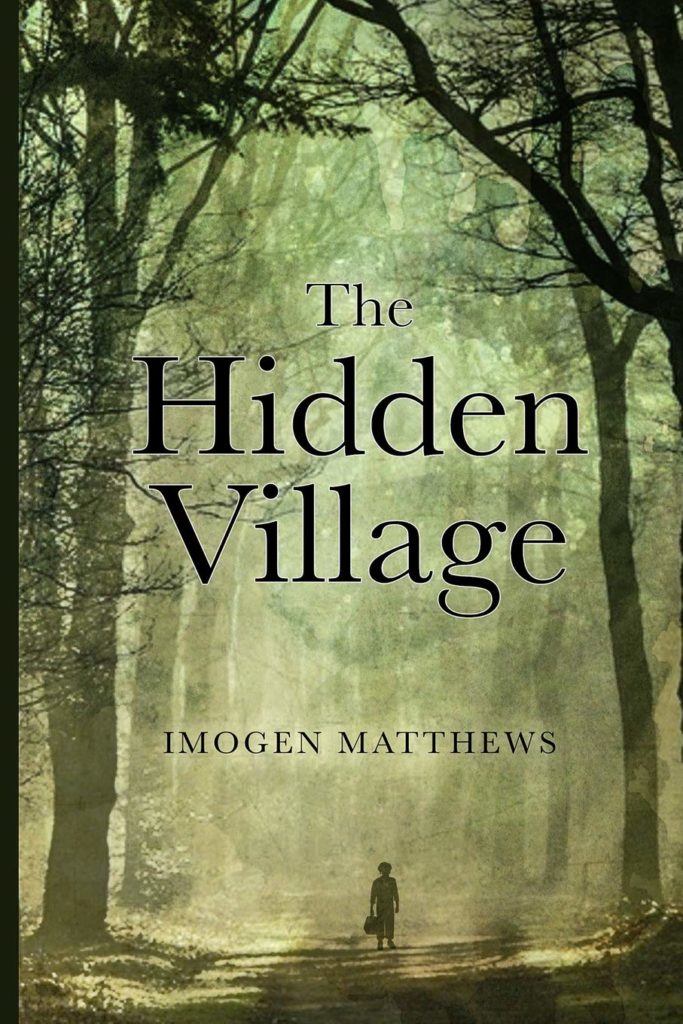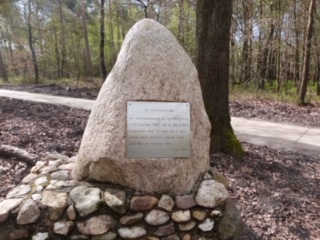It’s World Book Day today. Which means if you’re a parent of children of a certain age you’ve probably had some panicked moments of coming up with an outfit! Hopefully, that’s over with now, so grab and coffee and relax, and take a moment to consider what you can learn from writing fiction to your brand storytelling.
The insight for this post comes from Imogen Matthews, business journalist, trends researcher, strategic communications specialist and also published author. Imogen’s book, The Hidden Village, tells a story from the Second World War that you might not be familiar with. So, here’s our first parallel to the business world. There was a gap in the market for the story.
First I had some questions for Imogen on the process of writing her novel.
What was the moment or trigger for saying “I’ve got to tell this story”?
I was standing in the low doorway of a dark underground hut, trying to envisage what it must have been like to live here, hidden away deep in the Veluwe woods.
For the 80 or so people, mainly Jews, the alternative would have been terrifying – discovery and arrest by the Nazis, deportation to one of the concentration camps the world was only just beginning to hear about, and almost certain death. I felt my whole body tingle. In an instant, I knew I needed to tell their story which so few people have since heard about.
I had just discovered this hidden village, even though I’d been cycling along these paths with my family for 20 years. What caught my eye that day was a memorial stone at the side of the path. On closer inspection, I read the inscription which was to the local people who had been so courageous and selfless in helping this community stay hidden from the Germans.
How much of the plot did you create before you started writing? Did you “storyboard” it in advance, and how did it change as you progressed through the writing?
I knew from the start that I wanted to write a novel and not a work of non-fiction. Back home, I Googled “Het Verscholen Dorp” (the Dutch for the hidden village) but found very little, until I stumbled upon an out of print book written in the 1970s, which was a compilation of interviews, stories and diagrams of the construction of the huts. When I tracked down a copy on the Dutch website bol.com, I thought I’d hit the jackpot.
Over the next nine months, I pored over the book with the help of Google translate and gradually pieced together the story I wanted to tell. I was intrigued by all the different accounts of those who helped build the village, who lived in the village and who helped the community survive by supplying all their provisions which they brought to them in secret on pain of discovery by the Germans.
It’s hard to remember whether the story changed as I never plotted it out chapter by chapter. This is not how I write. I prefer to jot down scenes and characters and update them as I go along. I often find I write as a reader – what I mean is I often have no idea what is going to happen next!
What about for your characters, as there’s quite a cast in this story. How did you create an authentic voice for them? How much did you write character sketches ahead of starting to write?
It’s true there are quite a number of characters, but I found it easy to get into the head of each of them. When I write, I always imagine myself right there in the story and ask myself what I’d be feeling or how I’d react.
I found it helpful to write out character sketches at the start for my main characters, Jan, Sofie and Henk, but as the story took off, I’d find that they went off in new and unexpected directions to the way I’d first envisaged them.
The context and setting is key to your story, how did you research to ensure it had the ring of authenticity?
I have holidayed in the Veluwe every year since 1990. Since researching and writing The Hidden Village, I keep going back to Het Verscholen Dorp where I walk through the trees, breathe in the scents and listen to the sound of my footsteps as I traipse through the undergrowth towards the huts.
I think my family are getting a bit fed up with having to make a detour here every time we visit, but it’s become a sort of pilgrimage for me. This has been so important during the writing of my novel and, now, as I’m writing the sequel.
What was the most critical aspect overall for you to ensure readers could relate to and connect with the people and story?
I want people to believe that this story is real and not some fantasy I’ve invented, even though it’s fiction. That’s only possible if they find the storyline plausible and the characters to be convincing.
How does this relate to writing a brand story?
I’m not talking here about making up your brand story or creating a fairy tale. Not unless that is your positioning and unicorns and fairies are a big part of your legend. There are lessons to take though, for where fiction meets fact. Here’s why.
There’s always a moment
In the same way that Imogen describes finding the memorial stone and standing in the doorway of the hut, there is usually a moment for every founder that is the impetus to get going. The founder moment is a key one that I explore with businesses when starting to work on their story.
Think about what gave you that tingle. It’s a story that no one else can make up or replicate. It is the starting point of everything you have gone on to do. Hold onto that story and let people in on what you felt at the moment, when the need to do it became overwhelming.
You can have a plan, but the plan evolves
A bit like Imogen’s description of what she thought she was going to write from start to finish, and it changed, so it probably is with your brand stories. They will change and evolve, as your business changes and evolves.
Your brand story, unlike Imogen’s book, is never finished. Probably more like her story, it’ll have sequel after sequel. So make sure that your brand stories don’t just languish on your website, not looked at from year to year. Writing brand stories is not a one-off; it’s a continuous process.
Describe your customers, and keep adding to your picture
Character sketches are like writing your customer profiles or making a board about them. They help you hold the idea of who you are talking to, creating for, writing for, front of mind at all times. But, like your story, your understanding of your customer is going to continue to change. Not to mention that they themselves will be doing different things.
Don’t make your customer view so rigid that it doesn’t allow for them growing up or growing older, changing their likes and dislikes. And, like your brand stories, don’t write it once and never look at it again.
Be authentic
There’s been much praise for the way Imogen has brought to life a village that the vast majority of people cannot begin to imagine. It sounds authentic because of the work put into understanding the history, the context, any details from those who were there.
With a brand story, it always has to sound like you and your business, across every aspect of the story. I wrote some time ago about a cool, urban brand that then had an “about us” page that sounded like a bank. Don’t confuse customers; don’t make them wonder which is the real you.
You may not want to write a best-selling novel, but you’ll definitely want the best version of your brand stories. And if you just want a fascinating read, then I recommend adding The Hidden Village to your reading list.



